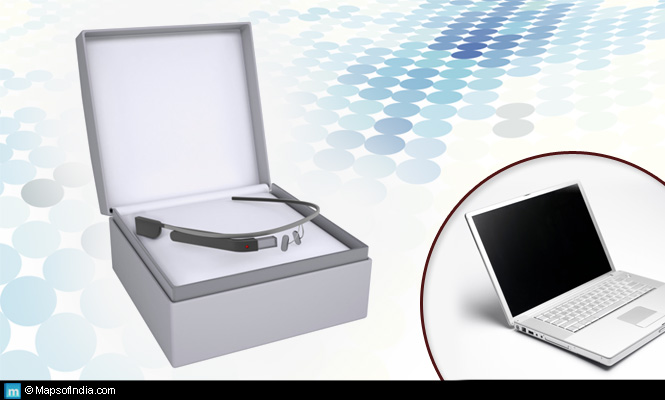 The burgeoning of wearable technology as the new entrant in the world of hi-tech gadgets and scientific knowledge is luring, to say the least. Instead of the practice of wearing watches on your wrist, wearing Google Glass is a revolution in itself so far as technological progress is concerned. Google Glass, the most popular trend-setter presently, is basically a pair of glasses with a display ‘screen’ that adapts to the environment one is in. Besides displaying the time of the day that is the limited function of a watch, Google Glass can answer queries on the go, accurately provide facts relating to the environment, do the work of a translator, that is, in other words, function as a living Google page accompanying you everywhere. This along with many other intriguing concepts, which are available as wearable technology today, such as the Apple Watch, has turned into obsessions for every tech savvy today. As the wearable industry hits an all-time high, there are many more innovative wearables being launched in the market, almost every day.
The burgeoning of wearable technology as the new entrant in the world of hi-tech gadgets and scientific knowledge is luring, to say the least. Instead of the practice of wearing watches on your wrist, wearing Google Glass is a revolution in itself so far as technological progress is concerned. Google Glass, the most popular trend-setter presently, is basically a pair of glasses with a display ‘screen’ that adapts to the environment one is in. Besides displaying the time of the day that is the limited function of a watch, Google Glass can answer queries on the go, accurately provide facts relating to the environment, do the work of a translator, that is, in other words, function as a living Google page accompanying you everywhere. This along with many other intriguing concepts, which are available as wearable technology today, such as the Apple Watch, has turned into obsessions for every tech savvy today. As the wearable industry hits an all-time high, there are many more innovative wearables being launched in the market, almost every day.
The important question to ask is, will this new trend of wearables make desktops and laptops redundant? Will the older technologies take a backseat with the mushrooming of the latest wearables?
Advantages of the wearable technology
Have you experienced frustration every time the internet in your smartphone functions abnormally slowly, or when you have to count minutes before the Google page on your laptop finally provides you the information you wanted? We all have, at some point. Good news is here: the wearable tech can not only solve each of those problems, but also assist you in many other chores, without a second’s delay.
The greatest boon perhaps, with the wearable tech is that it responds immediately to your queries, and updates you with all the information you need. The wearable tech is more immediate and handy, compared to any other technology.
Secondly, unlike your laptop and the smartphone which act as a shield between you and your environment, wearable techs indulge you with your environment, involves you to know more about it. When one works on the laptop or the smartphone, one is disconnected with the outside world—it is a solitary activity. This problem is minimised to a great extent with the wearable tech revolution.
Thirdly, by all markers, wearables are a fashion statement. Who does not love the idea of strapping a bracelet on the wrists that does the work of a wireless sync with the iPhone? Or who does not like to sport a sleek pair of glasses which does the work of a laptop processor and a microchip? Besides riding on their capacity to function immediately, the wearable tech is also riding in the progress in aesthetics. Today’s consumers are equally, if not more, concerned about the beauty of a gadget they endorse, as much as its functional logistics. The unique selling proposition of a wearable is its artistic taste—its sleekness, small size and light weight being crucial indicators. In this regard, a laptop however small, cannot match up to the chic smartwatch, or the modish bracelet or the sophisticated Google Glass.
While the wearable tech apparently seems much fancier compared to laptops, desktops and other gadgets because of the advantages it has over them, the picture is far from rosy. And here’s why we think that this recent trend of wearables will meet a despondent fate increasingly.
Disadvantages of the wearable technology
The immediate concern with the wearable tech is definitely biological. As more and more wearables are being introduced in the market, the hazardous health issues with some of them are being brought to book. In fact, the US Food and Drug Administration (FDA) has provided preliminary guidelines for regulation of the wearables, to scrutinise their ill-effects on the health, before being available in the market. The guidelines make a distinction between “casual wearables” and “serious medical devices.” In other words, only those wearables that can eventually pose threats to the welfare of consumers, as well as those that claim to diagnose and treat serious health illnesses, will be scrutinised by the FDA. This is a grave concern, and one that can consequentially restrict the rise of the wearable industry.
Secondly, the appeal of the wearables is confined to a small section of the population owing to its sky-high prices, which limits its usage to a particular class of people. This singular criterion therefore does not make the wearable industry reach the masses and become widespread, like the good-old desktops and its more user-friendly version, the laptops.
Thirdly, much as the wearable tech may be enthralling, it still cannot perform myriad functions which are extremely basic. For instance, one cannot write an email on a piece of wearable tech, neither can one make a phone call from the Google Glass or the Apple Watch or the Misfit Shine wearables. These functions which are so readily made use of in our laptops and smartphones, are so commonplace that their absence from the wearable tech makes it a serious disadvantage.
Now that we have looked at the pros and cons of the wearable tech, we must agree that this technology is very exciting, and a significant mark of progress in the field of scientific inventions and innovations. Like every technology which takes years to be accepted by the masses, the wearable technology too, will run a similar fate—it will take years before it can spread among all sections of the population, and be used by all and sundry. Remember the transitional phase when landline connections were meeting competition from the introduction of cell phones? Just as it took years for the technology to be welcomed in the way it is present today, the wearable tech will also take years before the thought of its use is less scary and more convenient. It cannot, in the near future at least, replace laptops and smartphones. But there is no doubt that the wearable tech is here to stay, making our lives so much easier.
Read more:
Features of Microsoft Windows 10





